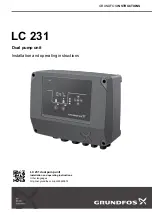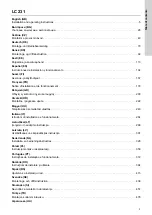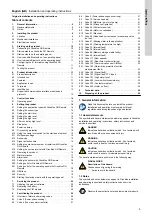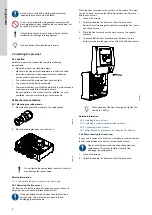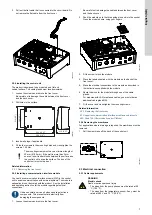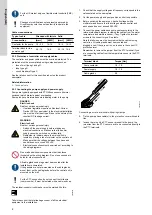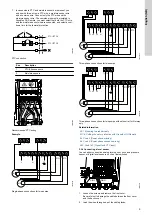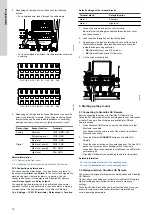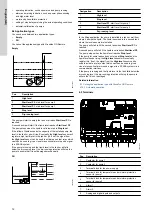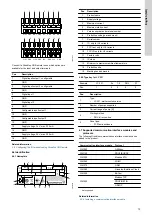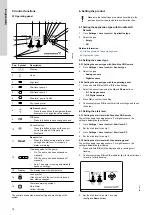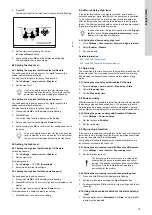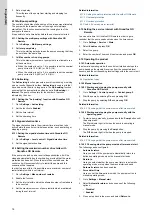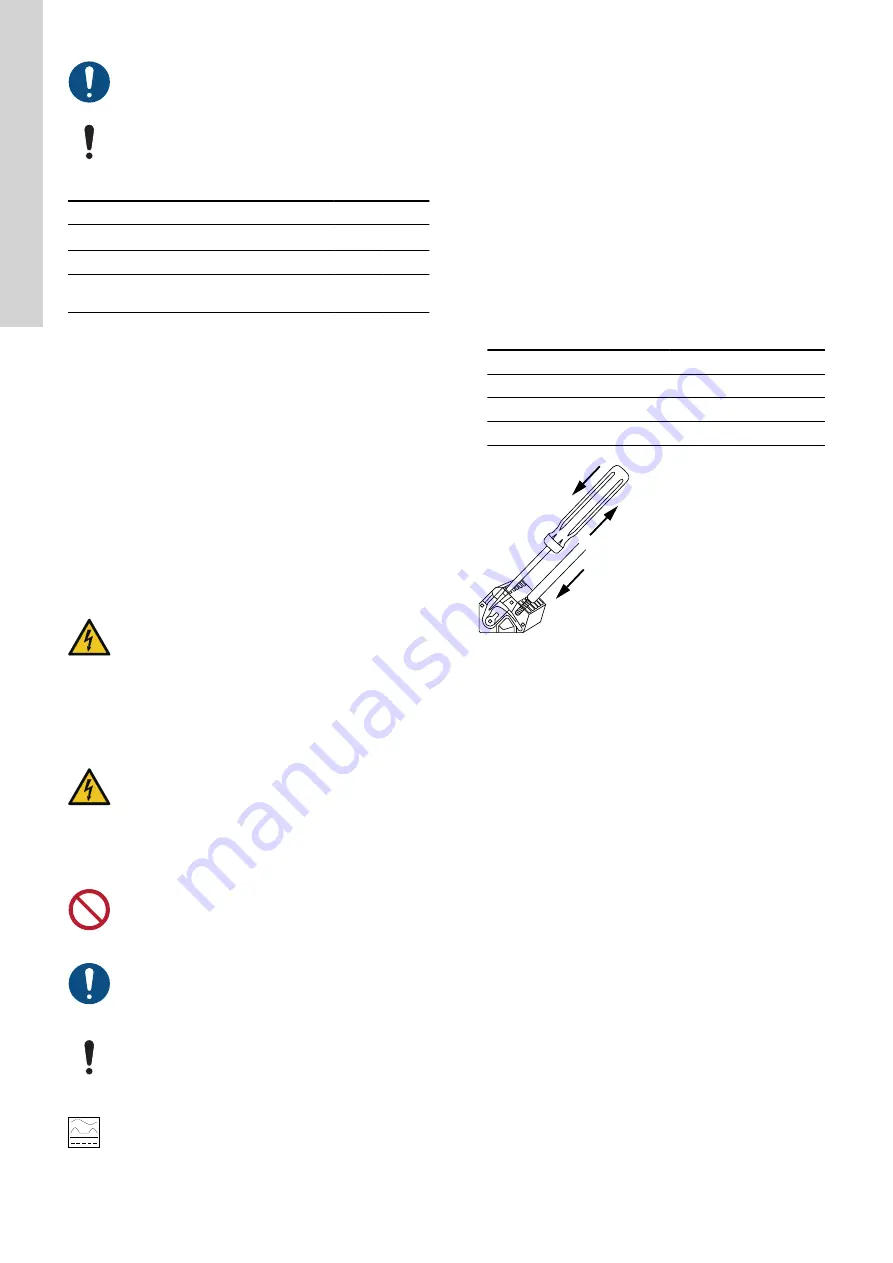
For the US market only, use flexible metal conduits (FMC)
only.
Changes or modifications not expressly approved by
Grundfos may void the user's authority to operate the
equipment.
Cable cross-sections
Type of cable
Stranded with ferrule Solid
Cross-section
[mm
2
]
[AWG]
[mm
2
] [AWG]
Contactor for the pump
1.5 - 2.5
16-14
1.5 - 4
16-12
Terminal block for the
power supply
2.5 - 10
14-8
2.5 - 16 14-6
2.3.2 Protection of controller and supply cables
The controller and power cables must be overload-protected. The
protection must be accomplished using components such as:
•
fuse of melt type gL and gG
•
fuse type gD
•
circuit breaker of type C.
See the rated current for this specific product on the product
nameplate.
Related information
2.3.3 Connecting the pump supply and power supply
Pumps are typically equipped with PTC/Klixon sensors (thermal
switched) which protect against overheating.
Some also have moisture sensors indicating water in the pump.
DANGER
Electric shock
Death or serious personal injury
‐
If national legislation requires a Residual-Current
Device (RCD) or equivalent in the electrical installation,
this must be of at least type B, due to the nature of the
constant DC leakage current.
WARNING
Electric shock
Death or serious personal injury
‐
Switch off the power supply before making any
electrical connections. Make sure that the power
supply cannot be switched on accidentally.
‐
Remember to indicate where the main switch is
located by placing a label or similar on the control unit.
‐
Make sure that the voltage between the phase and
neutral does not exceed 250 VAC.
‐
Electrical connections must be carried out according to
the wiring diagrams.
Do not add additional components other than those
illustrated on the wiring diagram. Do not use unused pin
holes for other connections.
All cable glands and plugs must be mounted after the
installation is completed.
If the gaskets are not pre-mounted on the cable glands,
mount them on the cable glands before the control unit is
mounted on the wall.
For the PTC connection, do not connect the third wire
(common wire). It must be isolated with a cable-end cap.
The residual-current circuit breaker must be marked like this:
TM066230
Take into account the total leakage current of all the electrical
equipment in the installation.
1.
Check that the supply voltage and frequency correspond to the
values stated on the nameplate.
2.
Cut the power supply and pump cables as short as possible.
3.
Before switching the power on, check all voltages with a
multimeter and ensure that the voltage between neutral and
each phase does not exceed 250 VAC.
4.
Connect the power cables and pump cables according to the
relevant electrical diagram, including the cables from the motor
temperature and moisture sensor, if any. Tighten the terminal
screws to the correct torque. See table.
Note that all wires must be secured inside the cabinet using
cable ties. All cable glands must be mounted and
plugged, even if they are not in use, to ensure the correct IP
protection level.
Remember to remove the jumper from the PTC terminal if you
are connecting cables from the temperature sensor to the PTC
terminals.
Terminal block
Torque [Nm]
Pump contactor
1.2 - 1.5
Power supply
1.2 - 1.5
Cable glands
2.5
TM070570
Connecting a wire to a terminal with spring clamps
5.
Tie the pump phase cable(s) to the protection cover with cable
ties.
6.
In case there is only a PTC sensor present in the pump, the
two wires from the PTC sensor have to be connected directly to
the PTC terminals.
8
English (GB)
Summary of Contents for LC 231
Page 2: ......

